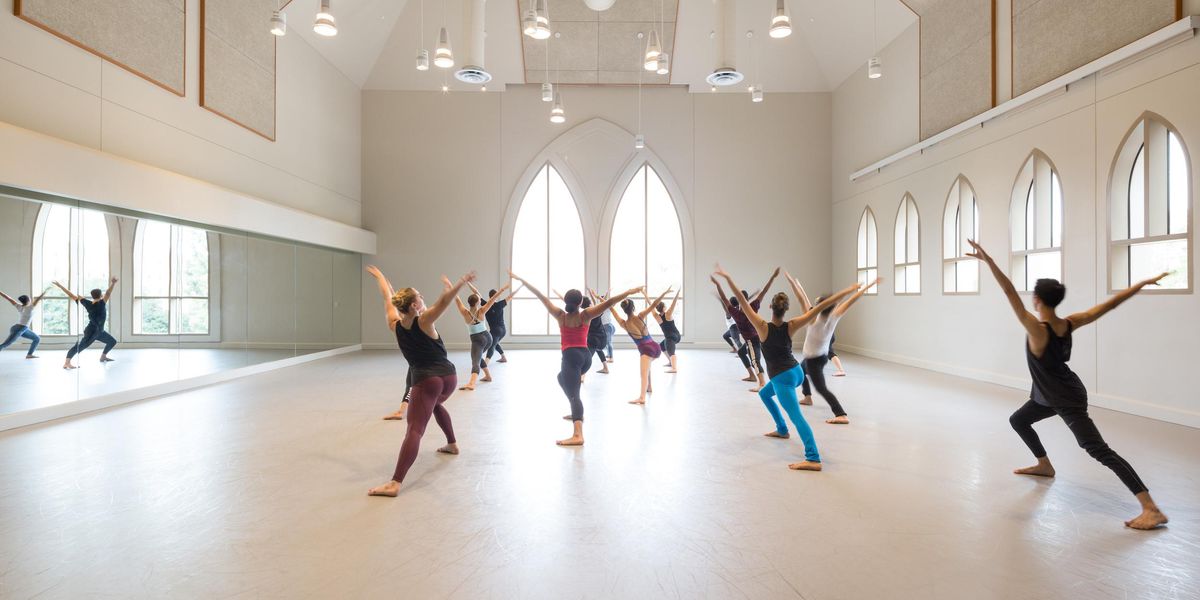Suzushi Hanayagi (1928–2010)Â
Thoroughly rooted in classical Hanayagi dance but unafraid to cross borders into the avant-garde with the likes of Robert Wilson, dancer and choreographer Suzushi Hanayagi was an unusual pioneer, especially for a Japanese woman of her generation.
Hanayagi mastered the traditional Kabuki-based style of Japanese dance (having earned the right to use the professional name Hanayagi as her own after learning 100 dances from their repertoire), and adding what she learned from other classic Japanese dance styles. Then, drawing from the whimsical everyday that she believed was central to her vision, she created free-spirited, abstracted, but powerfully personal statements in modern dance.
In 1984, Hanayagi choreographed Wilson’s “Knee Plays,” which were interludes of his multi-sectioned work the CIVIL warS, a first of many collaborations with the renowned director.
Over two decades they created 16 works with international theater and opera companies, including The Forest (1987); Death, Destruction and Detroit II (1987); Debussy’s Le Martyre de St. Sebastien for Paris Opéra Ballet (1988); Gertrude Stein’s Dr. Faustus Lights the Lights (1992); Shakespeare’s King Lear (1990) and Puccini’s Madama Butterfly (1993).
Despite such pan-Pacific achievements, Hanayagi was characteristically humble. “All that I learned from the teachers has become my flesh and blood. And when I am asked to choreograph, it all comes out,” Hanayagi was quoted as saying in Odori Wa Jinsei (Dance is Life), by Kazuko Tsurumi, Senrei Nishikawa and Suzushi Hanayagi (Fujiwara-Shoten, 2003).
My memories of Hanayagi are highly personal. We met in 1964, and we became close friends and artistic collaborators. In New York’s Judson Memorial Church, we began the first of a dozen collaborations in experimental dance, which were performed in New York, California, and Japan through the 1980s, including Wall St. Journal (1966), The Lost State of Franklin (1974–1976), and Trickster Today (1977).
In Wall St. Journal, a protest of the Vietnam War, we created a movement score cut from nine months of newspaper and magazine images. Later, saying we wanted to try for “pure dance,” we could not resist the lure of research and props. We emphasized the unpredictable, using falling sticks, for instance, so that the meaninglessness of the coincidental found new meaning.
Hanayagi, whose name at birth was Mitsuko Kiuchi, began her dance training with her aunt Suzukinu Hanayagi, and performed for more than 50 years in the Kabuki-style Hanayagi school. She also studied the more abstract Noh-like jiuta mai style from Takehara Han, as well as the Kyoto based Inoue School from Yachiyo Inoue IV.
Crossing schools as Hanayagi did was also highly unusual, even frowned upon, in Japan, where unquestioned loyalty to one’s school had long been the rule.
In 1961 Hanayagi was invited by Japan Society to study at the Martha Graham School and to tour the United States. While in the U.S., she collaborated with Yoko Ono and Ay-O, among many artists. She also took part in Anna Halprin’s workshops in San Francisco. She married Japanese visual artist Isamu Kawai in 1962.
Trisha Brown was very fond of Hanayagi. The eighth movement of Brown’s dance Primary Accumulation represented, in Brown’s words, “a one-second distillation of my love for Suzushi Hanayagi.”
When Robert Wilson learned that Suzushi’s disappearance was caused by dementia, he asked filmmaker Richard Rutkowski and me to join him in creating a tribute to her, which premiered at the Guggenheim Museum in 2009. KOOL: Dancing in My Mind, in which I served as dramaturge, recreated excerpts of Hanayagi’s modern dance pieces with Wilson and with me, and juxtaposed photos of her dancing in her younger days with close-ups of her face, hands, and feet warped by disease.
The piece became a film, directed by Rutkowski and Wilson, premiering in 2010 on ARTE TV in France and Sundance Channel in the U.S. A longer version, The Space in Back of You, premiered at the 2012 Dance on Camera Festival and was shown at the American Dance Festival this summer.
Wilson chose KOOL to represent his work at the 2010 Jerome Robbins Award ceremony at the Baryshnikov Arts Center that honored him in December 2010. The event’s program notes summarized Hanayagi’s contribution to his work in this way: “Without her influence, he would not have been able to master the literary texts and operatic pieces that have become such a focus of the latter part of his career.”
For herself, she wanted funny, wild, or tough moments in her work. To be shocked was good. She was relentless, but patient in her search for new ideas. What I remember the most about her is how she continued to believe, as she said in her letter to me, “we should try.”
(Hanayagi’s death on October 1, 2010 was only announced after her older sister, Suzusetsu Hanayagi, passed away on June 3, 2012. The two sisters, who had frequently performed together, shared in the festival prize for Hanayagi-style dance bestowed by the Japanese government’s cultural department in 1998.) —Carla Blank
Top photo: Suzushi Hanayagi (L) and Suzusetsu (R) during a U.S. tour in the 1980s
Above right: “Wall St. Journal” (1966) collaboration by Suzushi Hanayagi (L) and Carla Blank (R) at Judson Memorial Church
Below: “With Son” Suzushi Hanayagi. Tokyo, 1972
All photos courtesy Carla Blank




